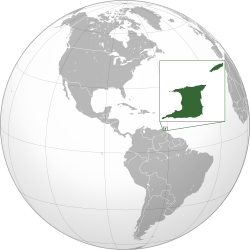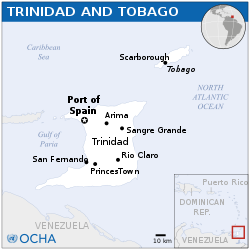**Historical Overview**:
– Trinidad and Tobago’s history dates back to 7,000 years ago when it was first settled by pre-agricultural Archaic people.
– European colonization began with Christopher Columbus’s arrival in 1498, followed by Spanish colonization and later British rule.
– Trinidad and Tobago gained independence in 1962 and became a republic in 1976.
– The country’s economy is primarily industrial, focusing on petroleum and petrochemicals.
– The nation’s wealth is derived from its large reserves of oil and natural gas.
**Cultural Significance**:
– Trinidad and Tobago is known for its diverse cultures and celebrations, including Carnival, Diwali, and Hosay.
– The country is the birthplace of music styles like steelpan, calypso, and soca.
– African and Indian cultures have a prominent influence on Trinidad and Tobago’s cultural landscape.
– The renaming of Trinidad by Christopher Columbus and the possible origin of Tobago’s name add to the cultural heritage of the islands.
**Population Dynamics**:
– The population of Trinidad boomed due to the influx of French and later British settlers.
– The demographics of Trinidad evolved over time, including Europeans, free blacks, enslaved individuals, and Indigenous people.
– Slavery abolition, indentured labor systems, and the arrival of Indian laborers further diversified the population.
– Changes in population demographics reflected the shifting economic and social landscape of Trinidad.
**Economic Development**:
– The indentured labor system extended to 10 years in 1854, with over half of sugar cane production by 1902 being by independent Indian farmers.
– Tobago faced economic challenges, leading to widespread poverty and its eventual annexation to Trinidad.
– The early 20th century saw developments like protests, the introduction of a local elected assembly, and the emergence of the labor movement.
– The petroleum industry’s impact, American presence during World War II, and the emergence of political parties shaped Trinidad and Tobago’s economic landscape.
**Geographical and Geological Features**:
– Trinidad and Tobago consists of two main islands, with Trinidad covering 4,768km and Tobago covering about 300km.
– The terrain includes mountains, plains, and notable ranges like the Northern Range.
– The geology of Trinidad features various rock formations and deposits of oil and natural gas in the Southern Lowlands.
– The country’s economy shifted from agriculture to tourism, joining regional organizations like CARIFTA and CARICOM for economic cooperation.
Trinidad and Tobago (/ˈtrɪnɪdæd ... təˈbeɪɡoʊ/ ⓘ, /- toʊ-/, TRIH-nih-dad ... tə-BAY-goh, - toh-), officially the Republic of Trinidad and Tobago, is the southernmost island country in the Caribbean. Consisting of the main islands Trinidad and Tobago and numerous much smaller islands, it is situated 11 kilometres (6.8 miles) off the coast of northeastern Venezuela and 130 kilometres (81 miles) south of Grenada. It shares maritime boundaries with Barbados to the east, Grenada to the northwest and Venezuela to the south and west. Trinidad and Tobago is generally considered to be part of the West Indies. The island country's capital is Port of Spain, while its largest and most populous municipality is Chaguanas.
Republic of Trinidad and Tobago | |
|---|---|
| Motto: "Together we aspire, Together we achieve" | |
| Anthem: "Forged from the Love of Liberty" | |
 | |
 | |
| Capital | Port of Spain 10°40′0″N 61°30′27″W / 10.66667°N 61.50750°W |
| Largest city | Chaguanas 10°31′N 61°24′W / 10.517°N 61.400°W |
| Official languages | English |
| Other languages | See Languages in Trinidad and Tobago |
| Ethnic groups (2011) | |
| Religion (2020) |
|
| Demonym(s) |
|
| Government | Unitary parliamentary republic |
| Christine Kangaloo | |
| Keith Rowley | |
| Bridgid Annisette-George | |
| Nigel de Freitas | |
| Ivor Archie | |
| Kamla Persad-Bissessar | |
| Legislature | Parliament |
| Senate | |
| House of Representatives | |
| Independence from the United Kingdom | |
• Province of the West Indies Federation | 3 January 1958 – 14 January 1962 |
| 31 August 1962 | |
• Joined the Caribbean Community at the Treaty of Chaguaramas | 1 August 1973 |
• Republic | 1 August 1976 |
| Area | |
• Total | 5,131 km2 (1,981 sq mi) (164th) |
• Water (%) | negligible |
| Population | |
• 2022 estimate | 1,405,646 (151st) |
• Density | 264/km2 (683.8/sq mi) (34th) |
| GDP (PPP) | 2023 estimate |
• Total | |
• Per capita | |
| GDP (nominal) | 2023 estimate |
• Total | |
• Per capita | |
| Gini (2012) | 39.0 medium |
| HDI (2022) | very high (60th) |
| Currency | Trinidad and Tobago dollar (TTD) |
| Time zone | UTC-4 (AST) |
| Date format | dd/mm/yyyy |
| Driving side | left |
| Calling code | +1 (868) |
| ISO 3166 code | TT |
| Internet TLD | .tt |
The island of Trinidad was inhabited for centuries by Indigenous peoples before becoming a colony in the Spanish Empire, following the arrival of Christopher Columbus, in 1498. Spanish governor José María Chacón surrendered the island to a British fleet under the command of Sir Ralph Abercromby in 1797. Trinidad and Tobago were ceded to Britain in 1802 under the Treaty of Amiens as separate states and unified in 1889. Trinidad and Tobago obtained independence in 1962, becoming a republic in 1976.
Unlike most Caribbean nations and territories, which rely heavily on tourism, the economy is primarily industrial with an emphasis on petroleum and petrochemicals; much of the nation's wealth is derived from its large reserves of oil and natural gas.
Trinidad and Tobago is well known for its African and Indian cultures, reflected in its large and famous Carnival, Diwali, and Hosay celebrations, as well as being the birthplace of steelpan, the limbo, and music styles such as calypso, soca, rapso, parang, chutney, and chutney soca.


